Presented by ClearanceJobs & Carahsoft
Recorded at ClearanceJobs Connect 2025, government, industry, and policy leaders gathered to explore how the national security community is evolving — technologically, culturally, and ethically. Across a day of rich discussion, a single message emerged: the cleared workforce of tomorrow will thrive on three enduring pillars — trust, technology, and talent.
From clearance reform to workforce retention, from artificial intelligence to adjudication integrity, every conversation returned to the same idea: national security depends as much on how people are vetted and valued as on the systems they protect.
Trust as the Cornerstone of Security
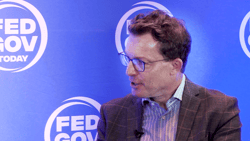 For David Cattler, former Director of the Defense Counterintelligence and Security Agency (DCSA), everything begins with trust. “Security isn’t just about compliance — it’s about sustaining trust relationships with people who protect the nation,” he said.
For David Cattler, former Director of the Defense Counterintelligence and Security Agency (DCSA), everything begins with trust. “Security isn’t just about compliance — it’s about sustaining trust relationships with people who protect the nation,” he said.
Under his leadership, DCSA modernized clearance vetting with transparency tools that let individuals track their background checks “like a pizza order,” and continuous monitoring that identifies issues earlier. Yet, he was clear that automation must not replace accountability. “We should not allow AI to take that fundamentally human decision about trust,” he said. “Technology can help, but judgment must remain human.”
That theme resonated across the event: technology is not the answer in itself — it’s an amplifier of integrity.
Transparency, Oversight, and the Information Tightrope
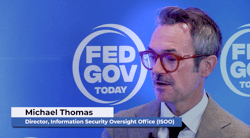 Michael Thomas, Director of the Information Security Oversight Office (ISOO), spoke about the delicate balance between secrecy and transparency. “We’re the dividing line between what must be protected and what’s ready to be released,” he said.
Michael Thomas, Director of the Information Security Oversight Office (ISOO), spoke about the delicate balance between secrecy and transparency. “We’re the dividing line between what must be protected and what’s ready to be released,” he said.
From his vantage point at the National Archives, Thomas sees the challenge of managing immense volumes of digital data that continue to grow faster than humans can process. “We finally have the tools to solve problems like over-classification and inconsistent standards,” he said. “AI can help — but it should be a decision aid, not a decision maker.”
Thomas also emphasized the importance of Controlled Unclassified Information (CUI), which unifies fragmented agency rules under one framework. As adversaries increasingly target unclassified systems, this common structure, he said, will be “pivotal in the years to come.”
Law, Candor, and the Human Element of Clearance
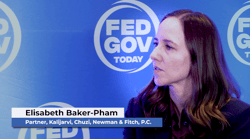 Where Cattler and Thomas focused on oversight and policy, Elizabeth Baker-Pham, an attorney with Kalijarvi, Chuzi, Newman & Fitch, grounded the discussion in human experience — the moment when a clearance begins.
Where Cattler and Thomas focused on oversight and policy, Elizabeth Baker-Pham, an attorney with Kalijarvi, Chuzi, Newman & Fitch, grounded the discussion in human experience — the moment when a clearance begins.
“The moment of inception is the application, and it’s the most important part of the process,” she said. Baker-Pham represents clients navigating security-clearance challenges and sees two mistakes repeatedly: rushing and under-explaining. “The form asks for the ‘bad’ information,” she said, “but adjudicators need the full picture — the context, the remorse, the remediation.”
She urged applicants to slow down, explain patterns over time, and document their mitigating actions under SEAD-4 guidelines. “Judgment is the throughline,” she said. “Don’t let your application be just a checklist — it’s your case for trust.”
Her advice applied not only to individuals but also to employers and FSOs. Security leaders, she suggested, should coach their people to tell their stories honestly and completely, because “candor builds credibility, and credibility builds clearances.”
Evolving the Workforce: Policy Meets People
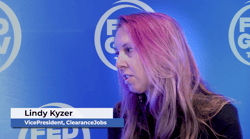 For Lindy Kyzer, Vice President of Content and Market Engagement at ClearanceJobs, the security workforce is in a moment of profound transition. “It’s energizing and anxious all at once,” she said. With Trusted Workforce 2.0 reshaping the clearance process for more than 120 agencies, Kyzer described it as “the biggest overhaul since the 1950s.”
For Lindy Kyzer, Vice President of Content and Market Engagement at ClearanceJobs, the security workforce is in a moment of profound transition. “It’s energizing and anxious all at once,” she said. With Trusted Workforce 2.0 reshaping the clearance process for more than 120 agencies, Kyzer described it as “the biggest overhaul since the 1950s.”
“Collaboration between government, industry, and academia has never been more important,” she said. ClearanceJobs’ platform — connecting nearly two million candidates with thousands of employers — acts as the connective tissue for that community, creating year-round engagement and communication.
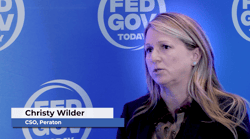 Christy Wilder, Chief Security Officer at Peraton, echoed the sentiment from an enterprise perspective. She called continuous v
Christy Wilder, Chief Security Officer at Peraton, echoed the sentiment from an enterprise perspective. She called continuous v
etting “the heartbeat of modernization,” enabling real-time risk awareness instead of the old five-year reinvestigation cycle. “It keeps the cleared workforce informed, engaged, and accountable,” she said.
Wilder also described how Peraton integrates AI and analytics to give security officers a unified view of data. “AI enables humans to make better decisions,” she said, “but it doesn’t replace them. Security is a people business.”
Technology and Trust in the Marketplace
Art Zeile, CEO of DHI Group, which owns ClearanceJobs, described 2025 as “the year to expand the mission.” Through 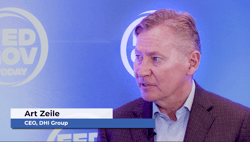 acquisitions like Agile ATS and the launch of Premium Candidate Experience, DHI is building tools that marry innovation with integrity.
acquisitions like Agile ATS and the launch of Premium Candidate Experience, DHI is building tools that marry innovation with integrity.
Zeile emphasized that artificial intelligence must serve trust, not undermine it. “Innovation without trust doesn’t last,” he said. His team’s latest tools — including an AI chatbot that helps candidates compare their skills to real job requirements — are designed to make recruiting more transparent and candidate-friendly.
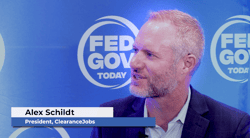 Alex Schildt, President of ClearanceJobs, called the company “the voice of the cleared community.” His vision combines technology and community-building to make careers in national security “cool again.” Through its Cleared Policy Advisory Board
Alex Schildt, President of ClearanceJobs, called the company “the voice of the cleared community.” His vision combines technology and community-building to make careers in national security “cool again.” Through its Cleared Policy Advisory Board
and data-driven insights, ClearanceJobs connects policy, people, and opportunity. “Data is the gasoline for the engine of national security,” Schildt said. “It fuels smarter hiring and lifelong career growth.”
Recruiting, Retention, and the Human Connection
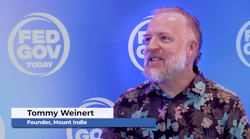 Tommy Weinert, Founder of Mount Indie, distilled recruiting into one phrase: “Recruiting is sales — but sales built on empathy.” He argued that understanding a candidate’s motivations, stability, and personal goals is as vital as compensation. “You can’t push
Tommy Weinert, Founder of Mount Indie, distilled recruiting into one phrase: “Recruiting is sales — but sales built on empathy.” He argued that understanding a candidate’s motivations, stability, and personal goals is as vital as compensation. “You can’t push
someone into a job that doesn’t fit,” he said. “If you do, they’ll leave in sixty days.”
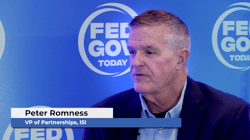 Peter Romness, Vice President of Partnerships at ISI, added a small-business perspective. His company acts as an “outsourced assistant FSO,” automating paperwork and improving quality control for defense contractors. “We regularly complete facility clearances in 40 days instead of 120,” he said. “Our job is to help small businesses sleep at night while keeping the mission secure.”
Peter Romness, Vice President of Partnerships at ISI, added a small-business perspective. His company acts as an “outsourced assistant FSO,” automating paperwork and improving quality control for defense contractors. “We regularly complete facility clearances in 40 days instead of 120,” he said. “Our job is to help small businesses sleep at night while keeping the mission secure.”
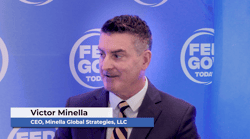 Victor Minella, CEO of Minella Global Strategies and former Deputy Under Secretary of the Navy for Intelligence and Security, reminded attendees that recruitment doesn’t end with hiring. “Roughly 300,000 federal employees will reenter the workforce this year,” he noted. “If we don’t engage them quickly, we risk a brain drain.” His advice: flexibility, mentorship, and communication. “We are all recruiters and retention specialists,” he said.
Victor Minella, CEO of Minella Global Strategies and former Deputy Under Secretary of the Navy for Intelligence and Security, reminded attendees that recruitment doesn’t end with hiring. “Roughly 300,000 federal employees will reenter the workforce this year,” he noted. “If we don’t engage them quickly, we risk a brain drain.” His advice: flexibility, mentorship, and communication. “We are all recruiters and retention specialists,” he said.
A Shared Mission
Across every conversation — from lawyers and policymakers to CEOs and security officers — a unified vision took shape: the cleared workforce of the future must blend technology, transparency, and trust.
Whether it’s an applicant crafting a truthful SF-86, a company deploying AI responsibly, or an agency balancing openness and secrecy, the goal remains constant: to protect what matters most through people who understand their responsibility to the mission and to each other.
At ClearanceJobs Connect 2025, that mission felt not only urgent — but shared.
Watch the Interviews
